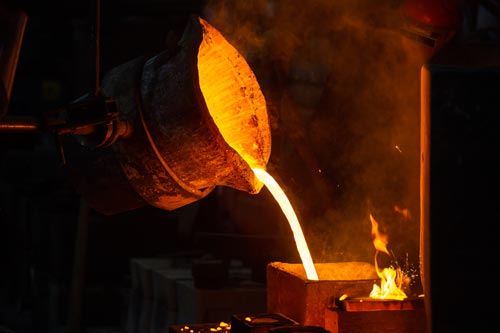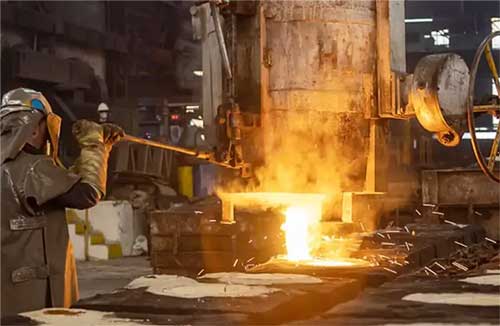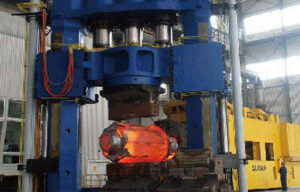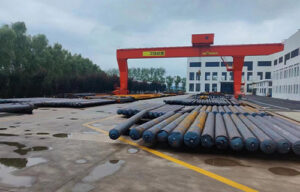Welcome to My Blog!
Before we dive into the content, I’d love for you to join me on my social media platforms where I share more insights, engage with the community, and post updates. Here’s how you can connect with me:
Facebook:https://www.facebook.com/profile.php?id=100090797846538
Now, let’s get started on our journey together. I hope you find the content here insightful, engaging, and valuable.
Table of Contents
Introduction

In the world of construction, materials are paramount to the success and longevity of any project. Steel plates, in particular, are crucial to a variety of structural applications. They serve as the backbone of bridges, buildings, machinery, and other large-scale projects. Not all steel plates are created equal, however, and high-quality steel plates offer numerous advantages over lower-grade materials. These plates are durable, versatile, and cost-effective in the long run, making them an ideal choice for construction projects that require strength and reliability.
In this blog post, we will explore the five key benefits of using high-quality steel plates in construction. We will discuss how these plates enhance the overall performance of a project, improve safety, and contribute to cost efficiency. Whether you are a contractor, engineer, or project manager, understanding the advantages of high-quality steel plates is essential to making informed decisions about material selection.
Superior Durability and Strength of Steel Plates
One of the primary reasons high-quality steel plates are used in construction is their exceptional durability and strength. Steel, by nature, is a material that can withstand immense pressure and stress. High-quality steel plates, however, are manufactured with specific alloys and production techniques that make them even stronger and more durable.
High-strength steel plates are designed to resist wear and tear, corrosion, and other environmental factors that could weaken the material over time. They are especially valuable in structures that will face harsh conditions such as extreme weather, exposure to chemicals, or heavy loads. This durability ensures that your construction project remains solid and secure for many years, reducing the need for costly repairs and replacements.
Key Features of High-Quality Steel Plates for Durability:

- Increased tensile strength: High-quality steel plates can withstand higher stress and pressure without failure.
- Enhanced resistance to corrosion: Steel plates are treated to resist rust and deterioration from moisture or chemicals.
- Impact resistance: These plates can absorb shock and stress without cracking or breaking, making them ideal for high-impact applications.
- Longer lifespan: The durability of high-quality steel plates means that they can serve in construction projects for decades, maintaining their structural integrity over time.
Improved Safety in Construction Projects
Safety is a critical concern in any construction project. High-quality steel plates provide a level of assurance that weaker, lower-grade materials simply cannot offer. Because of their strength and resistance to wear, steel plates help to ensure that structures remain stable and secure throughout the building process and during their operational life.
Using premium steel plates in the foundation, framework, or load-bearing components of a structure can prevent catastrophic failures, such as collapsing beams or buckling walls. In high-risk construction projects—such as bridges, skyscrapers, and industrial buildings—high-quality steel plates contribute significantly to the overall safety of the structure.
Safety Benefits of High-Quality Steel Plates:
- Higher load-bearing capacity: Steel plates support heavier loads, reducing the risk of structural failure under pressure.
- Consistency and reliability: High-quality steel plates offer uniform strength and performance across all plates, ensuring that the entire structure is safe.
- Protection against natural disasters: Steel’s resilience helps protect against earthquakes, floods, and other extreme conditions, ensuring the safety of the occupants and the integrity of the structure.
Versatility in Design and Applications
High-quality steel plates are incredibly versatile, which makes them suitable for a wide range of construction applications. Whether you’re building a high-rise building, a bridge, a machine frame, or even an industrial storage tank, steel plates can be tailored to fit virtually any design specification.
Their versatility comes not only from the material’s adaptability but also from the various types of steel plates available, including mild steel, carbon steel, and stainless steel. High-quality steel plates can be customized to meet specific size requirements, shape constraints, and even aesthetic preferences for architectural projects.
Versatility Benefits of Steel Plates:
- Customizability: High-quality steel plates can be cut, welded, and shaped to fit specific project requirements.
- Multiple grades and finishes: There are different types of steel plates available depending on the project’s needs, offering flexibility for various construction applications.
- Aesthetic appeal: Steel plates can be treated and finished to create visually appealing surfaces for architectural projects, ensuring that the final product meets both functional and aesthetic goals.
Cost-Effectiveness and Long-Term Savings

Although high-quality steel plates may come with a higher initial cost compared to their lower-grade counterparts, they offer significant cost savings in the long term. The durability and strength of these plates reduce maintenance needs, repair costs, and the likelihood of needing replacements.
Steel is a cost-effective material to begin with, but opting for high-quality steel plates helps ensure that your project doesn’t face unforeseen expenses down the road. When you factor in the extended lifespan and the reduced need for repairs, high-quality steel plates provide a sound investment for both small and large-scale construction projects.
Long-Term Savings and Cost Benefits:
- Reduced maintenance: High-quality steel plates require less frequent repairs, which saves on labor and material costs over time.
- Fewer replacements: Because of their durability, high-quality steel plates last longer, reducing the frequency with which they need to be replaced.
- Higher performance-to-cost ratio: While high-quality steel plates may have a higher upfront cost, their long-term performance and reduced maintenance costs make them more cost-effective in the end.
Resistance to Environmental and Industrial Factors
Construction projects often take place in environments that expose materials to various challenges. These challenges can include exposure to high temperatures, chemicals, moisture, and more. High-quality steel plates are designed to withstand these environmental and industrial factors, ensuring the longevity and performance of the structure.
For example, steel plates used in industrial applications, such as chemical plants or offshore oil rigs, need to resist corrosion and degradation from chemicals and saltwater. High-quality steel plates are engineered to withstand such conditions, making them ideal for applications that face exposure to harsh environments.
Environmental and Industrial Resistance:
- Corrosion resistance: High-quality steel plates are often treated or coated to resist rust and corrosion, which is vital in corrosive environments.
- Heat resistance: These plates can withstand high temperatures without warping, melting, or weakening, making them suitable for high-heat applications like power plants.
- Chemical resistance: Steel plates used in industrial settings resist damage from chemical exposure, making them essential for facilities like factories and refineries.
Steel Plate Comparison Table
| Feature/Specification | High-Quality Steel Plates | Standard Steel Plates |
|---|---|---|
| Tensile Strength | 500-700 MPa | 300-500 MPa |
| Corrosion Resistance | Excellent (special coatings) | Low to Moderate |
| Impact Resistance | High | Moderate |
| Temperature Resistance | High (up to 800°C) | Low to Moderate |
| Lifespan | 40+ years | 15-20 years |
Conclusion

In conclusion, high-quality steel plates offer numerous benefits for construction projects. Their strength, durability, versatility, cost-effectiveness, and resistance to environmental factors make them the material of choice for building safe and long-lasting structures. By selecting high-quality steel plates, construction professionals can ensure that their projects are built to last, reducing future costs and minimizing safety risks.
Steel plates, while initially more expensive, prove to be a smart investment due to their performance and longevity. When considering materials for your next construction project, high-quality steel plates should be at the top of your list.
FAQ
What is the difference between high-quality steel plates and regular steel plates?
High-quality steel plates are made with superior alloys and manufacturing processes that improve their strength, durability, and resistance to environmental factors. Regular steel plates may not offer the same level of performance and can wear out faster.
Are high-quality steel plates more expensive than standard steel plates?
Yes, high-quality steel plates typically cost more upfront due to their advanced manufacturing techniques and superior materials. However, they offer long-term savings due to their durability and resistance to wear and tear.
Can steel plates be used in all types of construction projects?
Steel plates are versatile and can be used in a wide range of construction projects, including bridges, buildings, heavy machinery, and industrial facilities. They can be customized to suit specific project needs.
How do I ensure that I am selecting high-quality steel plates for my project?
Look for certified steel manufacturers who use high-grade raw materials and adhere to industry standards. Also, consider the specific properties needed for your project, such as tensile strength, impact resistance, and corrosion resistance.
How long do high-quality steel plates last?
High-quality steel plates can last for decades, with a lifespan of up to 40 years or more, depending on the environmental conditions and the specific alloy used. Their durability makes them a reliable option for long-term construction needs.

